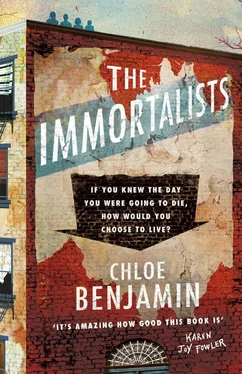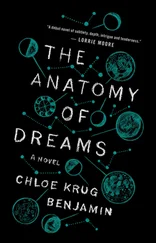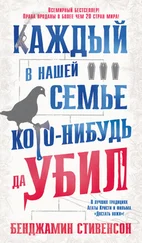Raj has big plans: new costumes, new business cards, bigger venues. He’s teaching himself the East Indian Needle Trick, in which a magician swallows loose needles and thread and pulls apart his cheeks for audience inspection before regurgitating them perfectly strung. He’s even booked them a run at Teatro ZinZanni, a dinner theater owned by one of his clients at the repair shop.
Klara can’t remember exactly when they decided to go into business together, or when they started to think of it as business. Then again, she can’t remember a lot of things. But she loves Raj: the jolt of his energy, his genius in animating objects. She loves the straight dark hair he is always pushing out of his eyes, and she loves his name, Rajanikant Chapal. He builds a mechanical canary for the Vanishing Birdcage – hollow plaster to which he glues real feathers – and uses a rod to manipulate its head and wings. She loves that the bird comes alive in his hands.
Klara’s greatest trick is not the Jaws of Life, but the force of will it takes to ignore her audience’s pagers and stonewashed jeans. In performing, she rewinds the clock to a time when people marveled at illusion and spiritualists talked to the dead, when they believed the dead had something to say. William and Ira Davenport – brothers from Rochester, New York, who conjured ghosts while roped to plank seats inside a large wooden cabinet – are the most well-known Victorian mediums, but they were inspired by sisters. In 1848, seven years before the Davenports’ first performance, Kate and Margaret Fox heard rapping sounds in the bedroom of their Hydesville farmhouse. Soon the Fox home was called the spook house, and the girls began a national tour. In Rochester, their first stop, physicians who examined the sisters claimed they were causing the noises by clicking bones in their knees. But a larger team of investigators could find no earthly reason for the raps, nor for the communication system – a code based on counting – that the sisters used to translate them.
In May, Klara bursts into the bathroom while Raj is showering. ‘Time!’
Raj cracks the foggy shower door. ‘What?’
‘Second Sight. Morritt’s trick – it’s time, time is how you do it,’ and she’s laughing, it’s so obvious, so simple.
‘The mind-reading trick?’ Raj shakes his head like a dog. Water splatters the walls. ‘How?’
‘Synchronized counting,’ says Klara, thinking as she speaks. ‘He knew the audience was listening for a secret code, a code based on words. How could he get around it? By creating a code based on silence – the amount of silence between his words.’
‘And the silence corresponds to what – letters? Do you have any idea how long it would take to make whole words?’
‘No, it couldn’t be letters. But maybe they had a list, a list of common objects – you know, wallets and purses and, I don’t know, hats – and if Morritt said “thank you” after twelve seconds, his assistant knew it was a hat. And for the type of hat, they could have had another list – materials, let’s say – one second for leather, two for wool, three for knits . . . We could do it, Raj. I know we could.’
He’s looking at her like she’s crazy, and she is, of course, but that’s never stopped her. Even years later, when they’ve done the act hundreds of times – even when Klara is pregnant with Ruby, even after Ruby is born – Klara never feels closer to Raj than she does during Second Sight. Together, they balance on the edge of failure, Raj holding an object and Klara straining, straining to hear his cue before racing through their numbered lists. A Reebok sneaker. A pack of Lifesavers. The sharp intake of breath from the audience when she gets it right. No wonder it takes a drink or three to calm her down after the show, hours before she’s dull enough to sleep.
Two days before their opening at Teatro ZinZanni, Raj returns to Klara’s apartment after his shift at the repair shop. They’ll have to work through the night on the Vanishing Birdcage.
‘You get the wire?’ he calls, throwing his coat on a chair.
‘I’m not sure.’ Klara swallows. Yesterday, she was supposed to get a pack of thick brass wire from the art supply store on Market, which Raj will use to finish the birdcage. ‘I think I forgot.’
Raj comes toward her. ‘What do you mean, you forgot? Either you went to the store or you didn’t.’
She hasn’t told Raj about the blackouts. She’s gone months without one, but yesterday, Raj worked an extra shift and she had no distraction from the thoughts that swarm her when she’s alone: her father’s absence, her mother’s disappointment. She thought of how badly she wished Simon could see her now, not on the little blue-lit stage on Fillmore but at a real dinner theater, with real props and a real partner. So she left her apartment for a bar on Kearny and drank until the thoughts stopped.
‘Well, I did forget,’ says Klara, bristling, because this is what Raj does – he never lets anything go. ‘But the wire isn’t here, so I must not have gotten it. I’ll go tomorrow.’
She walks into the bedroom and pretends to adjust the string lights around the window. Raj follows her. He grabs her arm.
‘Don’t lie to me, Klara. If you didn’t do it, say so. We have a show to run. And sometimes, it feels like I care about it more than you.’
Raj designed their business cards – The Immortalist , they read, with Raj Chapal – and Klara’s new costumes. He got a tuxedo jacket from a suiting outlet and paid a seamstress to tailor it to Klara’s body. For the Jaws of Life, he ordered a gold sequined dress from an ice-skating catalog. Klara resisted – she thinks it’s cheesy, that it doesn’t look like vaudeville – but Raj says it’ll sparkle under the lights.
‘I care about this more than anything,’ she hisses. ‘And I wouldn’t lie to you. That’s insulting.’
‘Okay.’ Raj squints. ‘Tomorrow.’
13.
In June 1982, days after Simon’s death, Klara arrived at 72 Clinton for his burial. After a red-eye flight from San Francisco, she stood outside the gate of the apartment building, trembling. How had she become a person who hadn’t seen her family in years? Walking up the long staircase, she thought she might be sick. But when Varya opened the door and reached for her – ‘Klara,’ she heaved, her thin body enveloped in Klara’s fuller one – the time apart did not matter, not yet. They were sisters. That mattered, nothing else.
Daniel was twenty-four. He had been working out at the gym at the University of Chicago, where he was preparing for medical school. Now, when he pulled a sweatshirt off and Klara glimpsed his pale, muscled chest, its twin puffs of dark hair, she reddened. Acne dotted his chin, but his teenage solemnity had been replaced by a strong brow and jaw, a large Roman nose. He looked like Otto, their grandfather.
Gertie insisted on a Jewish ceremony for the burial. When Klara was a child, Saul explained the Jewish laws with dignity and persistence, as Josephus did to the Romans. Judaism is not superstition, he said, but a way of living lawfully: to be Jewish is to observe the laws that Moses brought down from Sinai. But Klara was not interested in rules. In Hebrew school, she loved the stories. Miriam, embittered prophet, whose rolling rock provided water during forty years of wandering! Daniel, unharmed in the lions’ den! They suggested that she could do anything – so why would she want to sit in the basement of the synagogue for six hours every week, studying the Talmud?
Besides, it was a boys’ club. When Klara was ten, twenty thousand women left their typewriters and babies to Strike for Equality on Fifth Avenue. Gertie watched on television with a sponge in her hand, her eyes shiny as spoons, though she turned the old Zenith off as soon as Saul came home. Klara’s bat mitzvah took place not individually on the Sabbath, as had her brothers’ ceremonies, but in a group of ten girls – none of whom were allowed to recite from the Torah or the haftarah – during the lesser Friday evening service. That year, the Committee on Jewish Laws and Standards decided that women could count toward a minyan, but the question of whether women could be rabbis, they claimed, warranted further study.
Читать дальше








![Мелани Бенджамин - Госпожа отеля «Ритц» [litres]](/books/384861/melani-bendzhamin-gospozha-otelya-ritc-litres-thumb.webp)



